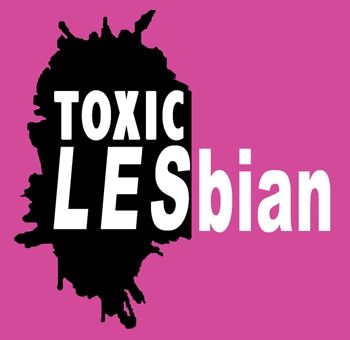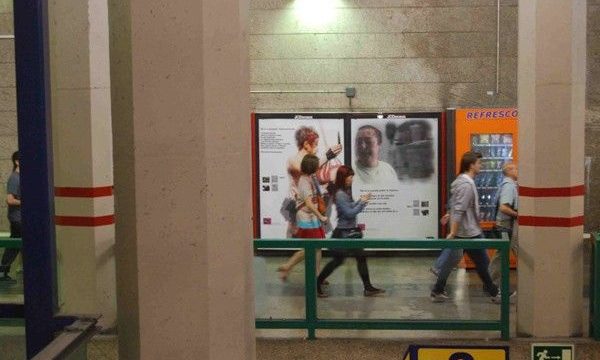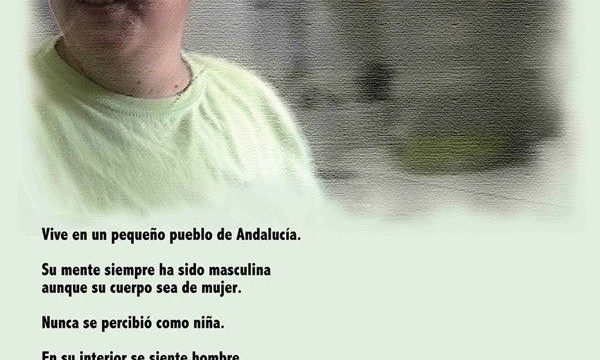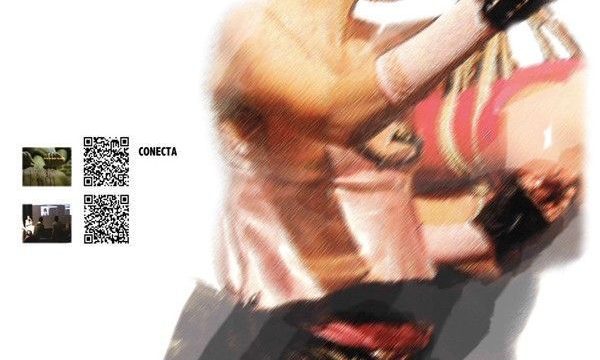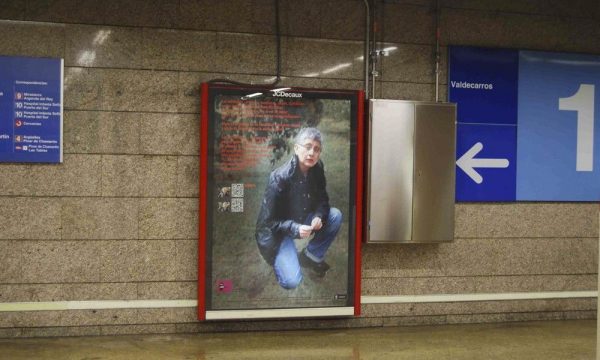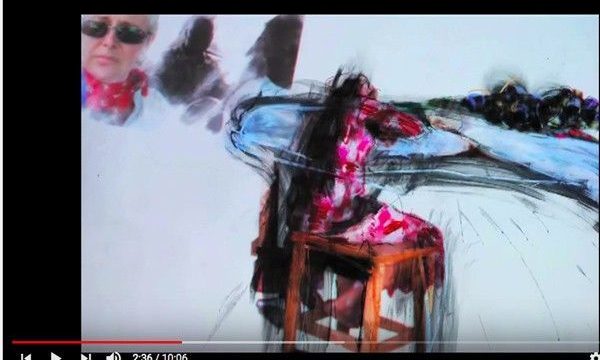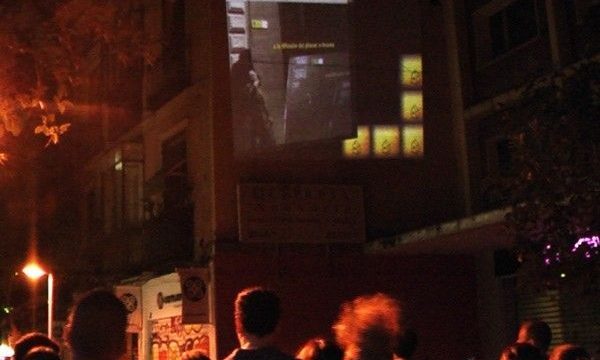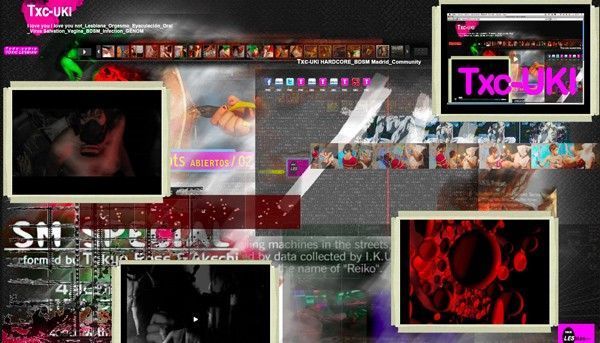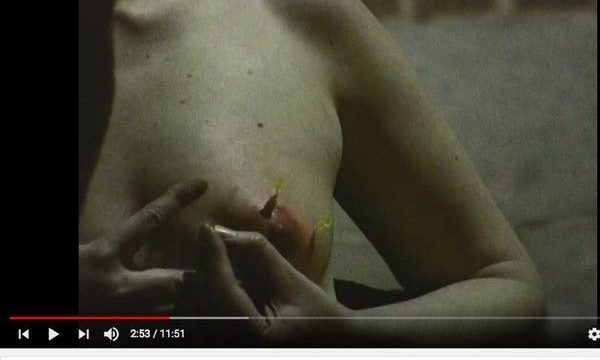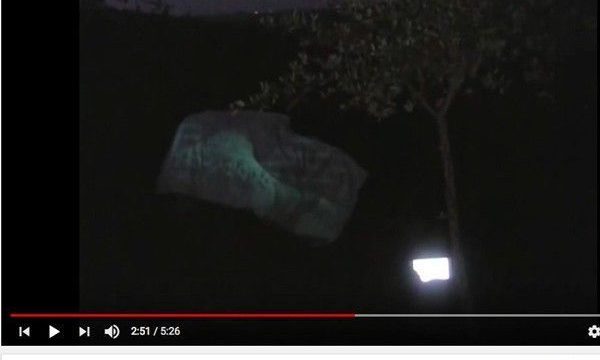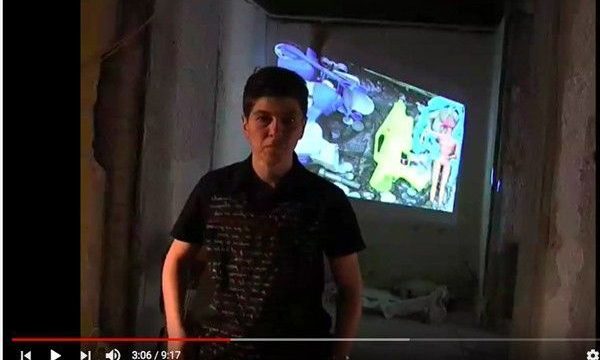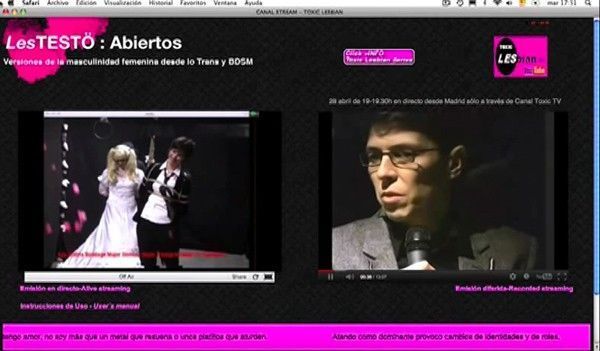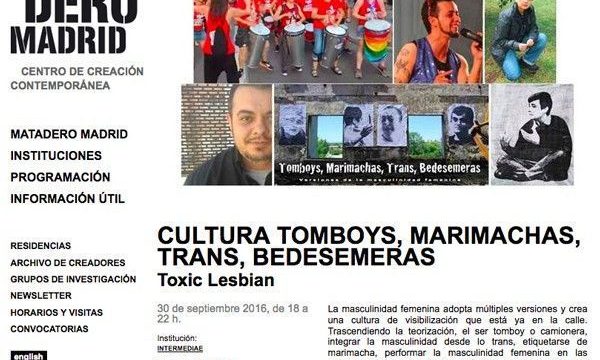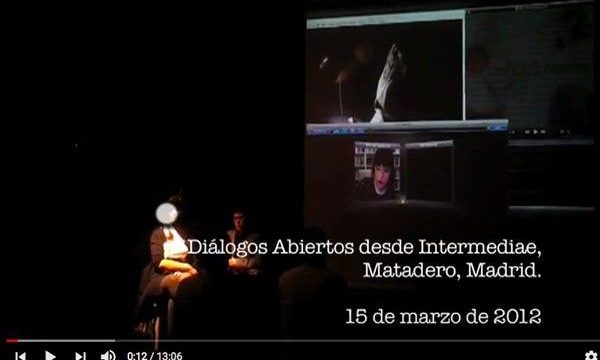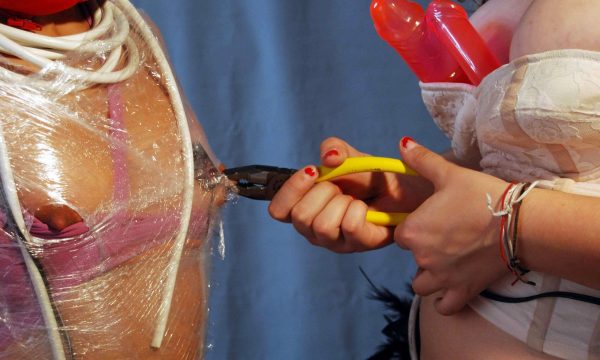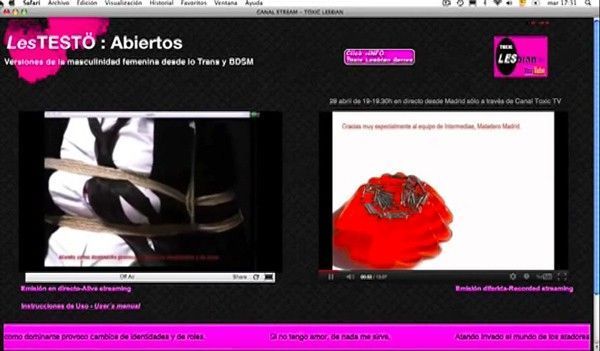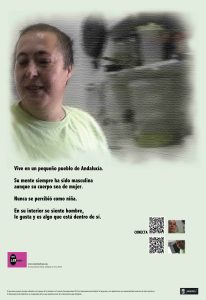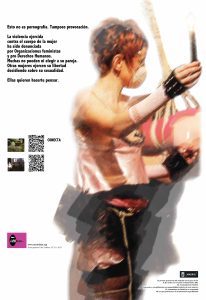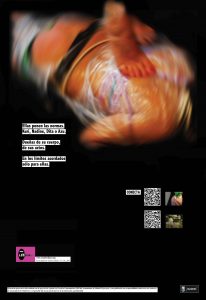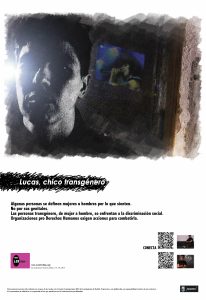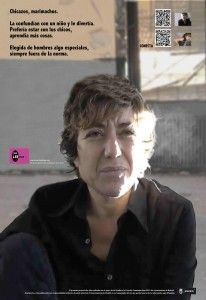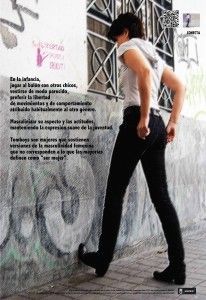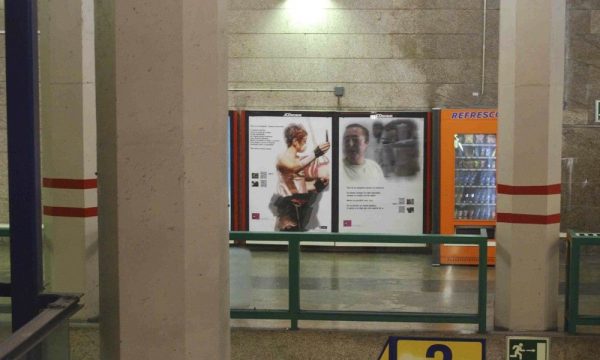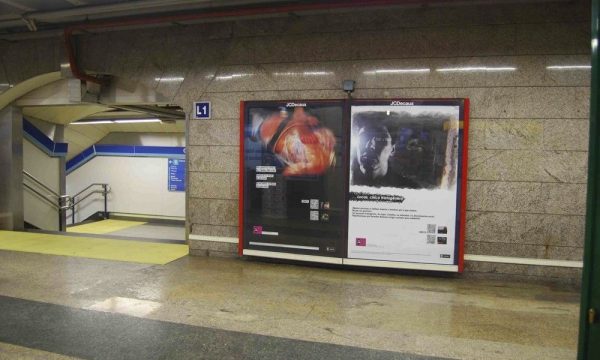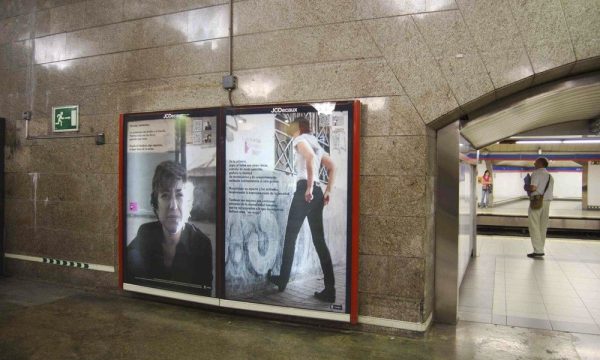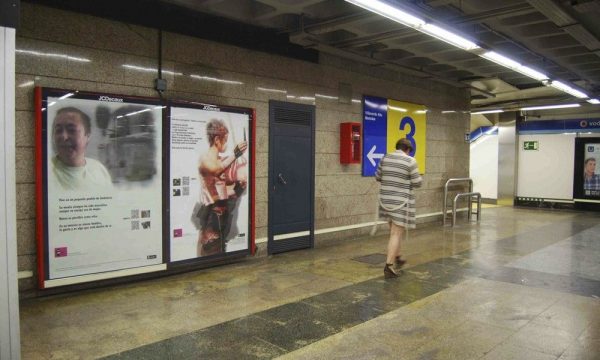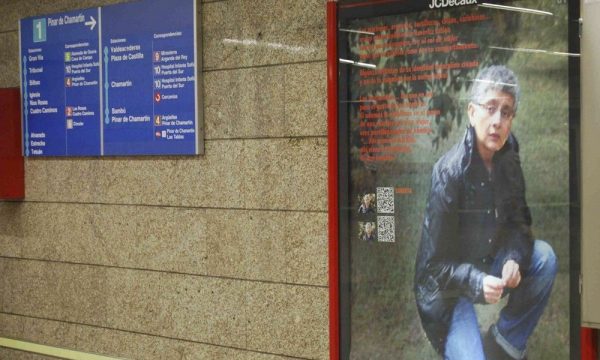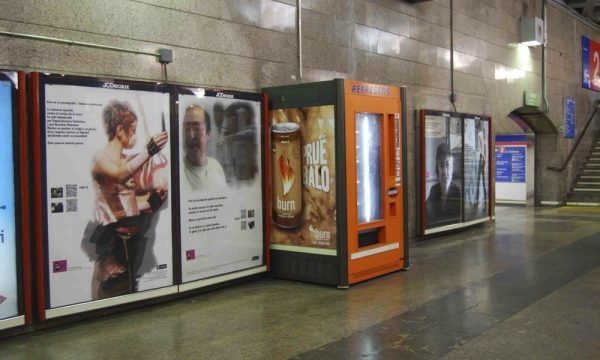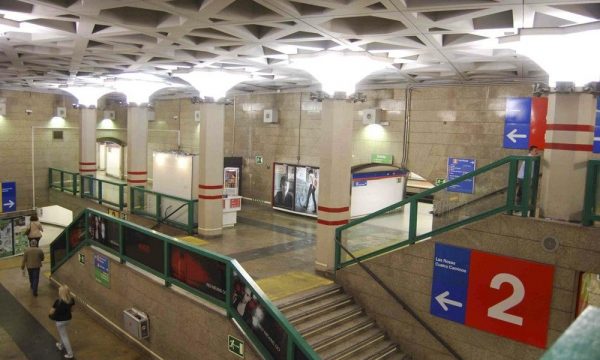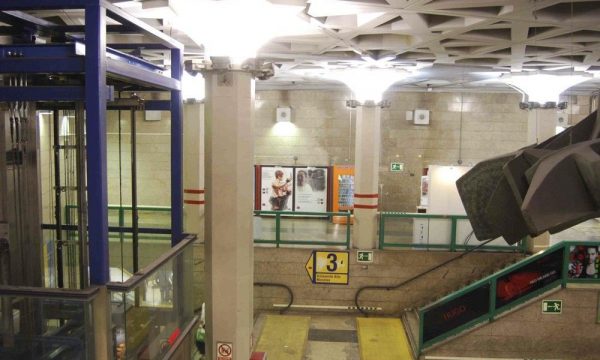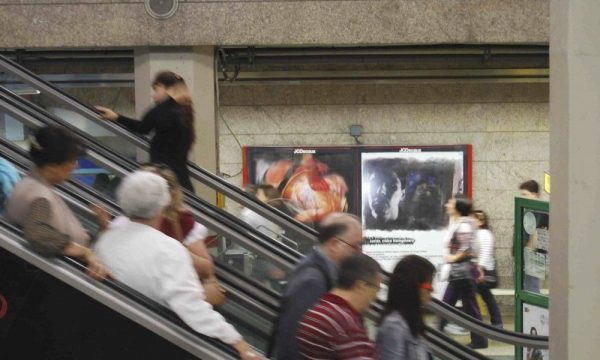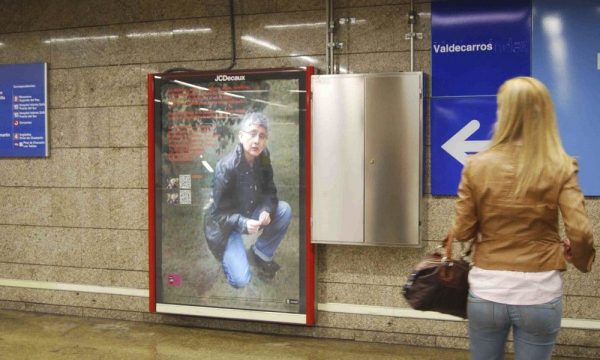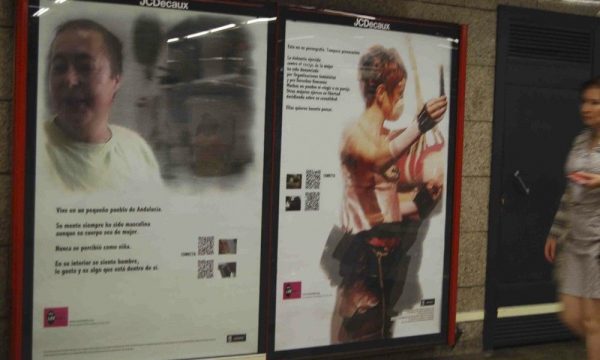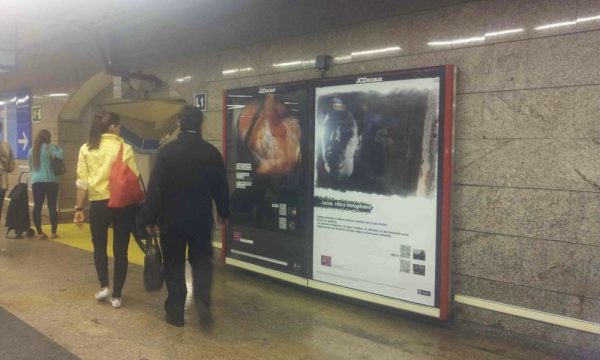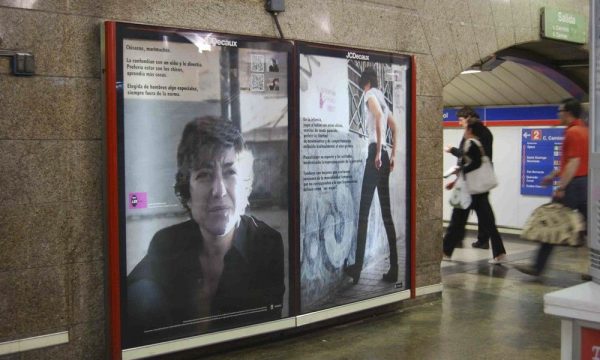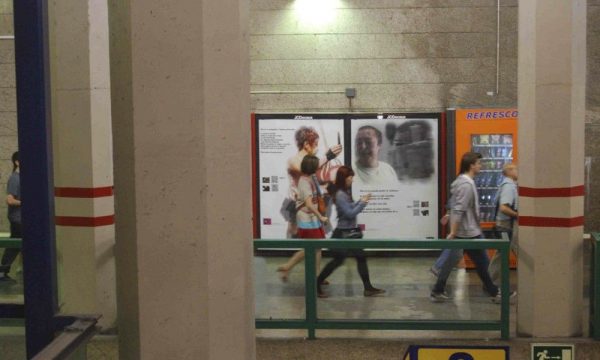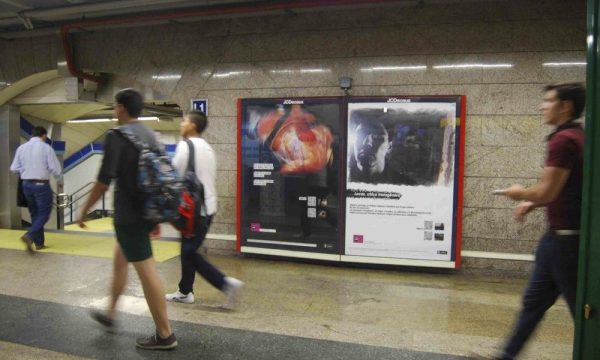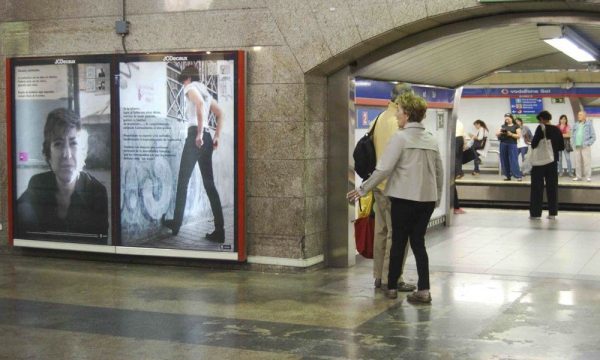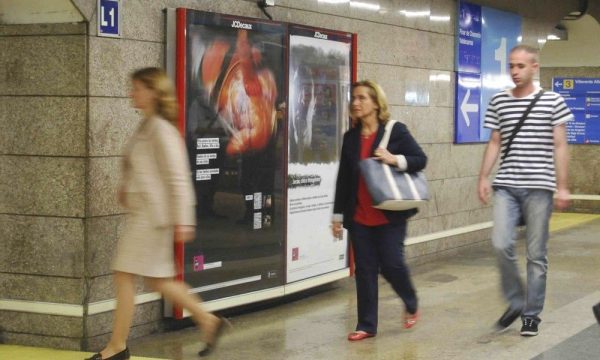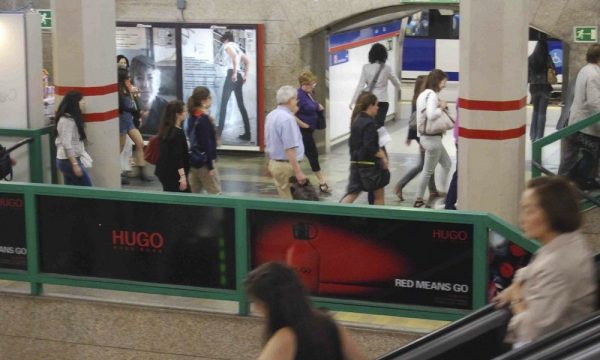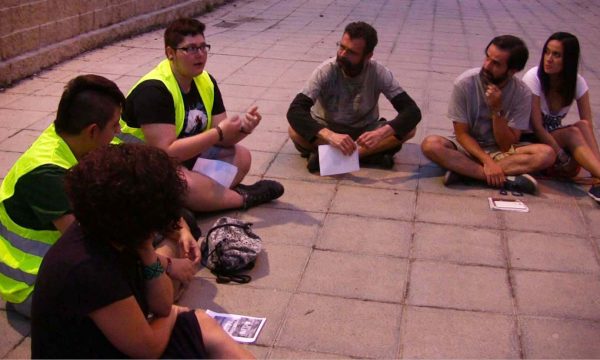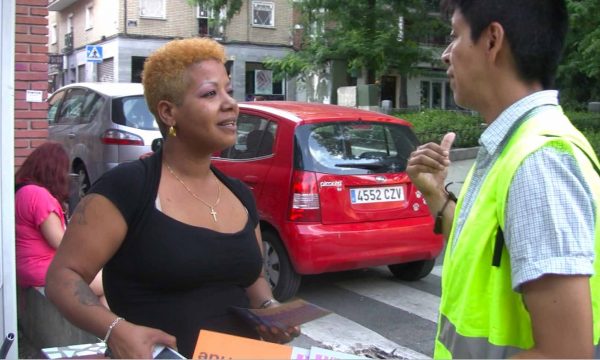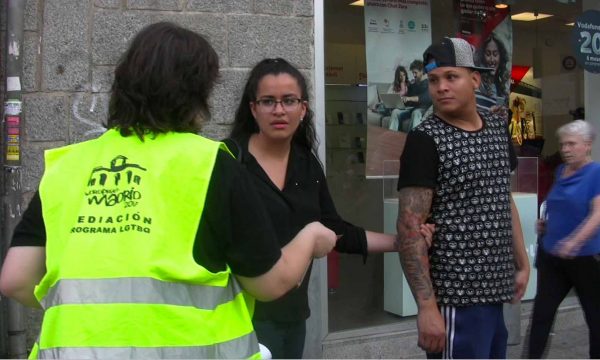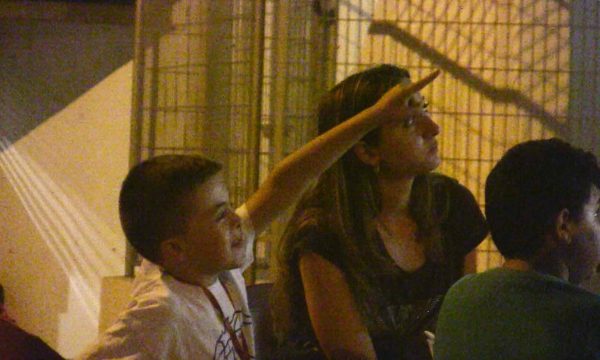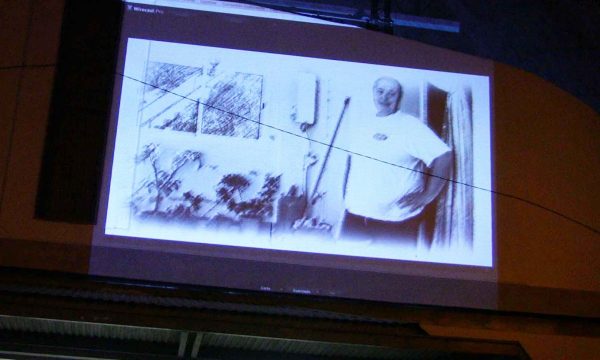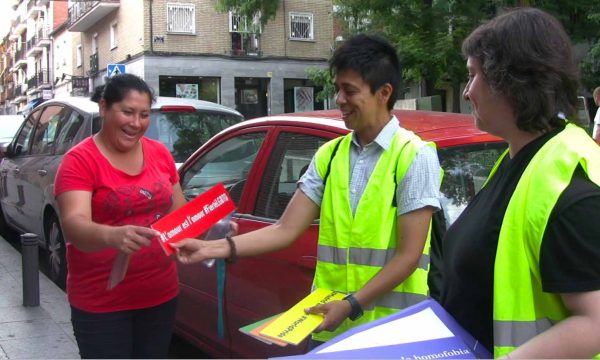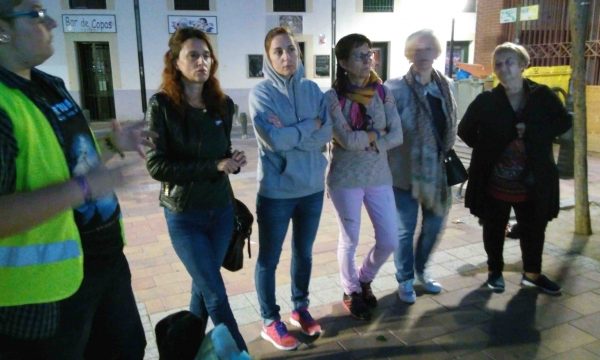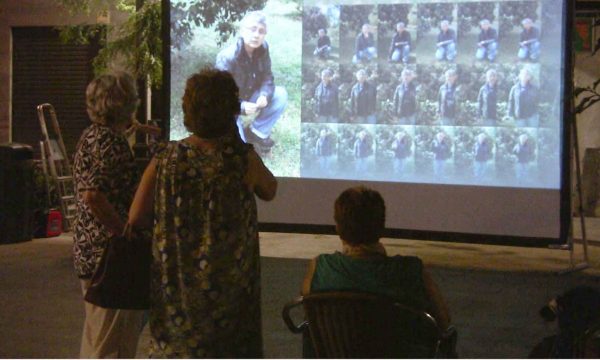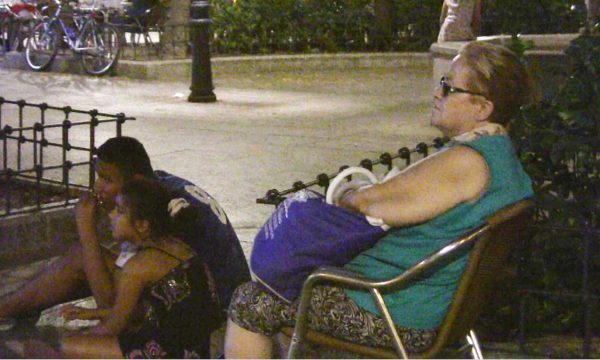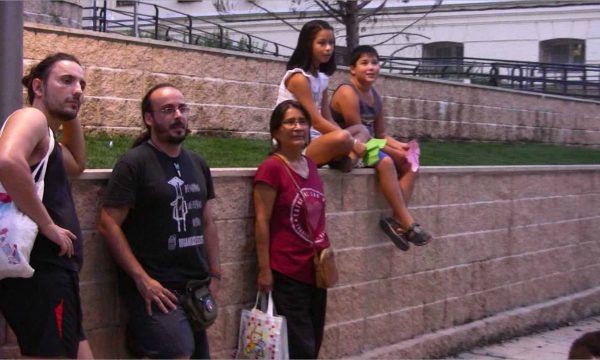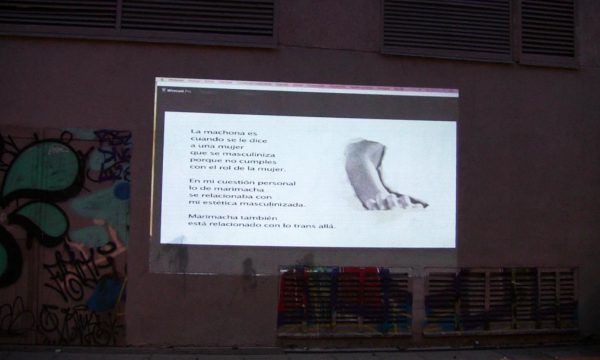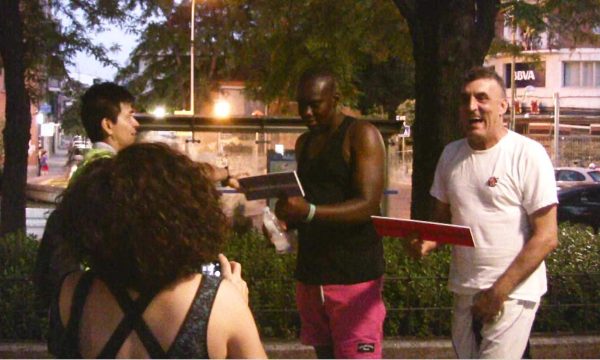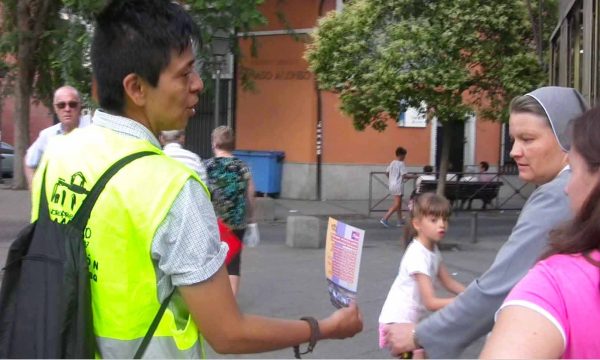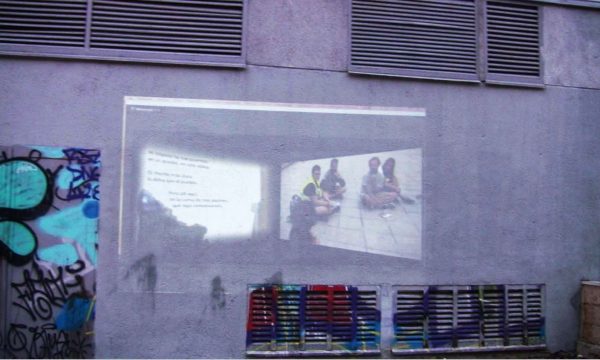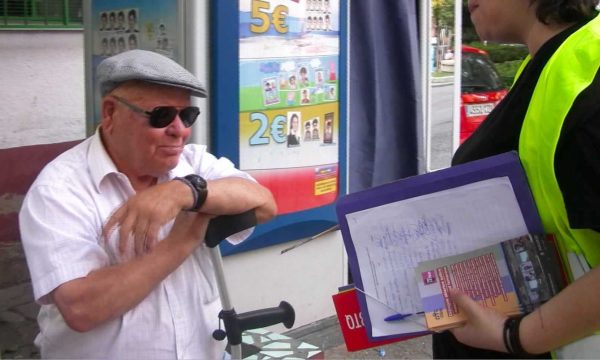A work in process project about gender identity in collaboration with social groups, institutions and activists
Exhibition “Gender Coreographies”, CCCB, Centro de Cultura Contemporánea de Barcelona (2019)
Projections of urban façades in Madrid neighbourhoods, funded by Madrid Council, 2017.
Production Grant from Madrid Council 2012, Matadero Contemporary Art Center. Urban action at Sol metro station, Madrid.
Art residency for production at Sierra Contemporary Art Center, Huelva, Spain, 2012.
Performances and various cultural events at Intermediae, Matadero Contemporary Art Center. Madrid from 2010 to 2016, and in social centers like Tabacalera or Patio Maravillas in 2010, and into social BDSM centers in collaboration with artists like Shu Lea Cheang and the gender debate group from Medialab Prado, Madrid, 2011-12.
Tomboys, Butches, Trans, Women Bedesemers is a work in process project from 2007 developped in collaboration with social groups, institutions and activists. The proposal aims to work about gender identity with a feminist approach in relation with butch lesbians, tomboys, transgender FTM, BDSM feminist women practicers, transexual women or dandys women, through online and alive perfomances, urban screenings, live streamings, interviews, open dialogues, land performances, projects in collaboration with other artists like Shu Lea Cheang, or cultural events with LGBTQ organisations.
Click on photos to enlarge / Download 15 images in .pdf
Urban action at Sol metro station, Madrid
Production Grant from Madrid Council 2012, Matadero Contemporary Art Center. Urban action at Sol metro station, Madrid.
Advertising placement at Sol metro station, Madrid, June 2013
Click on photos to enlarge / Download 7 images in .pdf
Pieces into English version:
1.
She lives in a small town in Andalusia.
Her mind has always been male although she has a woman’s body.
She never saw herself as a girl.
Inside, she feels like a man, she likes it and it is something rooted within her.
2.
This is not pornography. Or provocation.
Violence against
a woman’s body
has been condemned
by Feminist and pro-
Human Rights organisations.
Many cannot even choose their partner.
Other women exercise their freedom
to decide their own sexuality.
They want to make you stop and think.
3.
Machonas, areperas, tortilleras, chitos and carishinas…
In the Andean countries of Latin America
these are some of the words used to describe women who fit the woman’s role,
Both due to their appearance and their behaviour.
Some enjoy their masculine identity which is created
and not assigned to them by social norms.
Tomboys…are those women who aren’t
to men’s tastes.
And if you get noticed because of your relationship with another woman,
you’re seen as a man
“… Here comes the butch one,
Here comes the dyke,
The nearly-bloke!
4.
They make the rules.
Kuri, Nadine, Dita or Azu.
The mistresses of their own bodies,
of their actions.
Within the limits set
for them alone.
5.
Lucas, a transgender boy.
Some people identify themselves as women or men because of how they feel.
Not because of their genitalia.
Transgender individuals, from women to men, face social discrimination.
Pro-Human Rights Organisations are calling for action to combat this.
6.
Dykes, tomboys.
They mistook her for a boy and she found it funny.
She’d prefer to be with the boys, she’d learn more.
Elected by somewhat special men,
Always out of the ordinary.
7.
As a child,
playing kickabout with other boys,
dressing the same,
freely choosing
movements and behaviour
normally associated with the other sex.
Making their appearance and attitude more masculine,
maintaining the soft expressiveness of youth.
Tomboys are women who embody
versions of feminine masculinity
which do not correspond to what most people
define as “being a woman”.
Click on photos to enlarge / Download 20 images in .pdf
![]()
This project has been granted by Madrid Council 2012, Matadero Contemporary Art Center
Txc-UKI_I love you I love you not_Lesbian_Orgasm_Ejaculation_Oral_Virus Salvation_Vagina_BDSM_Infection_GENOM
A project carried out jointly by Toxic Lesbian and Shu Lea Cheang, with the Madrid BDSM community, to implement the version of the viral game HARDCORE UKI. A specific interface was developed to get it off the ground: www.toxiclesbian.org/txc-uki
UKI is a sequel created by Shu Lea Cheang from her cyberpunk I.K.U science fiction production. (2000) www.i-k-u.com
It tells the story of GENOM Corp., a cyberporn multinational which distributes I.K.U. codifiers to collect data from for profit organisations. In UKI, after the internet crashes, I.K.U codifiers are thrown into a cyber-waste scene where codifiers, twitter users and internet workers are crushed together and bump into one another.
Exchanging sex for codes, each code sexualising codes, UKI emerges as a virus whilst GENOM retreats to BioNet.
Hiding in the human body, GENOM turns red blood cells into a micro computerised ORGANISM, devoid of human emotion. Level 1 of the UKI viral game activates the virus, made virtual through the frenzy of being sexualised by codes, which it can use to infect the public and take the city. Level 2 of the UKI viral game takes its players, as the UKI virus, to infiltrate GENOM’s BioNet, to reclaim the lost orgasmic information.
Level 1 of the UKI game is part of the Medialab Prado “De-visualise” production workshop. Special thanks go to Azu, Nadine B. Demille, Dita Bi Teese and the Espacio LDF of Madrid for their input http://espacioldf.blogspot.com
Infect yourself, infect everyone else, infect Madrid! Infect Spain. Infect the world.
I LOVE YOU, I LOVE YOU NOT, your password for GENOM Corp.
Restrain me, tie me up, FREE ME.
Wrap me up tight, whip me hard,
I am your virus, your salvation.
Shu Lea Cheang
Abiertos (Open)
Abiertos shows hidden aspects of sexuality between women. Actions and attitudes which question the validity of gender categories and sexual orientation… Or on the other hand, those which question the sexual status of women due to their actions when in so-called liberal environment spaces.
Marisol Salanova* believes that more and more people are challenging normative discourse regarding sexuality since light is being shed on the socio-political interests which underpin such discourse. In the same way, the traditional family involves closed identities which foster a strong sense of heterocentrism. Foucault realised the connection between the forms that social organisation and our pleasures can take, explaining how regulating sexuality does not successfully repress sexual desire, but instead produces multiple sexualities, some of which constitute the norm and others which are subject to exclusion or marginalisation. The very categories of sexual orientation and gender identity which are created foster this control; practices such as homosexuality, anal or oral sex, sadomasochism…these end up being branded as “peripheral sexualities”, as Foucault referred to them.
Since Freud, sexuality has been defined as the processes through which the human subject is established in relation to others. We have begun breaking down notions whereby sexuality is defined according to genitalia, fuelled by the powerful pornographic industry where the major stars are the sexual organs, to the detriment of the rest of the body.
Toxic Lesbian has collaborated since 2005 with “liberal environment” spaces; with erotic stories, with people who define themselves as “swingers” or who merely frequent such places; with researchers who are developing a formal discourse in the academic field which seeks to help us understand these “deconstructive?” facts. It is this unique experience which, without claiming to know the full story or state anything with certainty, has allowed Toxic Lesbian to present Abiertos.
In “swinger” establishments, although consensual acts are not restricted, what is apparently clear is that female bisexuality is very common, but that “male bisexuality” has different boundaries which may lead to rejection both among men and women, as described in these contexts. In practice, some swinger women don’t appear to give much thought to their sexual orientation if their desire generally tends towards other women, and neither do they elaborate on their gender identity based on the way they interact with others; their pleasure and the many ways they achieve it is what governs the interlinked actions of the involved parties.
This attitude is in stark contrast with existing taboos and prejudices, which are both specific to lesbians and to society as a whole, and subject thousands of women to great tension and suffering, blaming them for their unacceptable orientation or gender identity.
What in this context do the concepts of “repression”, “perversion” or simply “blame” entail, and where do these leave lesbians who decide to include the term “homosexual” when defining their identity?
How can we explain these divergent paths?
*Cf. SALANOVA, M. Y CABAÑES E., De las tecnologías del yo al yo tecnológico: sobre la creatividad artística en la era de la cibercultura. Communication presented at the IV Academic Philosophical Society (SAF – Sociedad Académica de Filosofía) Congress, Universidad Complutense de Madrid. 4-6 February 2009
Lesbian_Ejaculation_Clitoris_Repression_Orgasm, Vagina_Bondage_Erection_Domination_Labia_Woman_Nipple_Oral
The second session establishes the parallel which exists between artistic creation on the internet as a Toxic Lesbian political policy, the figure of the cyborg and the BDSM attitude.
Cyberspace dispenses with conventional messages about sex, allowing users to act out hidden fantasies, as Marisol Salanova* points out. The roles that we are given in this context become as expendable as any role adopted during a sexual act, and the contrived masquerade that is sexual categorisation becomes all too easy to see through, showing it for what it really is, artificial and unnecessary, a prosthesis. Sexual activities which make use of technology are becoming more erotic and humanised; in reality, behind all this lies artificiality, there is no line separating human and machine (the artificial). Normative discourse regarding sexuality claimed to create categories by drawing specifically on the belief that this line existed, the line which separates “natural” practices from those which are not. In this sense therefore, when we reject this false dichotomy, we can open up to the possibility of transcending normative
discourse. The figure of the cyborg allows us to reinterpret the concepts of natural and artificial; new technologies show us, as Haraway said, that we are all cyborgs. The same idea regarding sexual orientation is then nothing more than contrived.
These assertions came from exploring BDSM practices. In Abiertos 02, a fetish-BDSM session is proposed, a peripheral practice, as Foucault would say, which uses the image of the cyborg created by Korean artist Shu Lea Cheang in her film “I.K.U.”
It shows the interrogator facing an absence of boundaries regarding gender and sexual identity. Everything is blended together and it is impossible to say unequivocally where a category begins and where it ends…and that being the case, whether there are practices which are more natural than others, where the machine ends and where the human begins. Is it a device? Or could it also be behaviour which is undetected but which was previously agreed on and repeatedly enforced? Are cyborgs the patriarchal stereotypes of gender and sex?
Click on photos to enlarge / Download 5 images in .pdf
Lesbian_Ejaculation_Clitoris_Repression_Orgasm, Vagina_Bondage_Erection_Domination_Labia_Woman_Nipple_Oral (II)
Swinger Couples, or Liberal Couples, are those which carry out sexual activities with other heterosexual couples in the same place, seeing it as a form of socialising and way of life. Abiertos collaborates with people and places from this environment. Some of these places are defined as contexts where, night after night, the boundaries to sexuality and sexual acts are crossed and where the status quo is challenged. Almost anything goes and you can attend on the mere condition that you share your sexuality, remain aware of your personal diversity at all times and make your fantasy a reality. They claim to offer a meeting space where the body is not seen as vulgar and where prejudices do not exist.
Abiertos explores the lesbian disinhibition that hundreds of women, whether they identify or not with this category, feel every night in these kinds of spaces, which are becoming increasingly common worldwide and yet which even today remain hidden from view. Abiertos as a Toxic Lesbian series claims to shed light on new realities, questioning the ways these are tackled.
The first session was carried out in collaboration with the liberal environment space Talismán Círculo Privado with participation from Lobogatito and Caperucitamouse as well as many others who wanted to be involved and share their own experience.
Abiertos 01 includes in its project the creation of a virtual community on social networks, broadcasting daily from around 7pm to 9pm about the project and its collaborators at @toxiclesbian and on the Toxic Lesbian Facebook page.
Abiertos 01 received support in developing its work from the gender group Medialab-Prado, publishing its developments on the public institution’s wiki http://wiki.medialab-prado.es/index.php/Proyecto_de_Toxic_Lesbian
Marisol Salanova is working with the Toxic Lesbian Abiertos project. She is a philosopher and researcher, an independent curator in the area of cultural management, and specifically dedicates part of her work to the conceptualisation of gender in the artistic world and alternative representations of sexuality. Some of her texts have been used in the presentation of the project and the author created the text “Introduction to sadomasochistic fantasies in swinger and orgy environments” specifically for Abiertos.
An event in the Sierra Centro de Arte (Sierra Art Centre) natural space
As part of the resident artist scheme in the Sierra Centro de Arte, the project continued its work with various performances held in the natural space, as well as interviews and open discussions on the subject of feminine masculinity.

Colabora:

Ayuntamiento Santa Ana La Real, Huelva

Portraits
This reimagines a personal version of feminine masculinity through various performances by Elena Tóxica, a lesbian woman. The events are held in abandoned urban or industrial areas, from which they are streamed to allow the general public to attend virtually. In the physical space where the event is held, only mediators involved in the performance itself are admitted. All that remains of each event are Internet files with a CC license. They are open to the public on YouTube and there is no final work, everything is a creative process. The performances invite women close in age to Elena Tóxica (who would have received education on masculinity in the 70s and 80s in Spain) of various origins to attend and speak through personal interviews or intervene during performances for which an invitation is displayed in the session’s title, sharing their personal experience of feminine masculinity.
The project in its first stage consists of five accounts of feminine masculinity from five people:
Alicia L.’s story, 26 April 2010
First on-site and virtual performance of LesTESTÖ with the participation of Alicia L., rebroadcast from Matadero Madrid, on trans. identity.
Charo’s story, 22 June 2010
Second on-site and virtual performance of LesTESTÖ with the participation of Charo, rebroadcast from La Tabacalera Madrid, on butch lesbianism.
Lucas’ story, 8 July 2010
Third on-site and virtual performance of LesTESTÖ with the participation of Lucas, rebroadcast from El Patio Maravillas Madrid, on transgender individuals.
Elena’s story, August 2010
Fourth on-site and virtual performance of LesTESTÖ with the participation of Elena Tóxica, rebroadcast from Bamako, Mali, West Africa, on tomboy lesbians.
Gloria’s story, March 2011
Fifth on-site and virtual performance of LesTESTÖ with the participation of Gloria, rebroadcast from La Tabacalera Madrid, on how normative feminine heterosexuality would label Gloria a tomboy.
The segments which include the full visual processes undertaken can be viewed on this player.
Projections of urban façades in Madrid neighbourhoods
As part of the project funded by Madrid Council linked to World Pride 2017, a number of different interventions will be held in outlying neighbourhoods of Madrid, with a view to fostering dialogue with boroughs which neighbour areas equipped with fewer cultural resources. Within the Toxic Lesbian team for this project there will be social mediators who, during the urban participation sessions, will discuss the issues raised by ‘Tomboys, Butch lesbians, Trans, BDSM-ers: Versions of feminine masculinity” with the public at Arganzuela, Villaverde, Vallecas, Hortaleza, Fuencarral and Vicálvaro neighbourhoods. The proposed framework for this initiative includes raising the profile of other LGBTQ groups and issues, from the perspective of human rights which ensure improved understanding of the social phenomenon of such groups. The sessions offer interactive urban screenings and multimedia, with live rebroadcasting via the Periscope social network channel which Toxic Lesbian has been using since 2016 for streaming, as well as the possibility of watching on its normal channel Toxic TV.
Simultaneously, open dialogues sesions took place at Madrid neighbourhoods like Vallecas, Ciudad Lineal, Latina, fuencarral, Carabanchel, Moncloa-Aravaca, Chamartín, Arganzuela, Centro, Vicálvaro, Chamberí, Hortaleza, San Blas, Retiro and Moratalaz.


